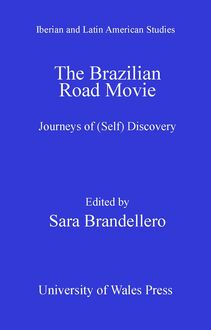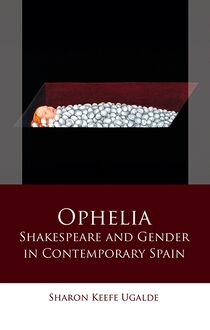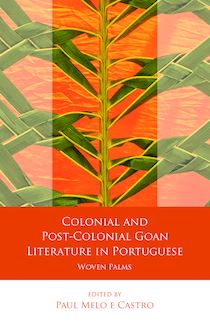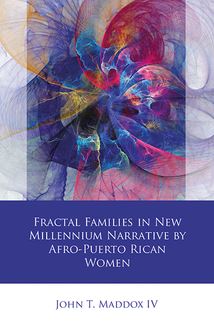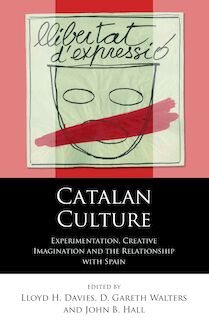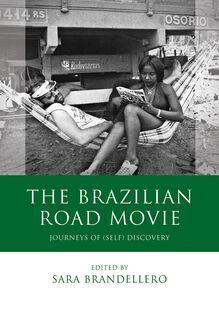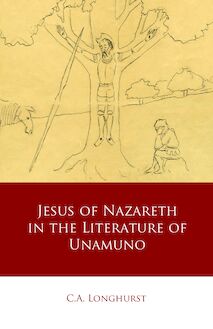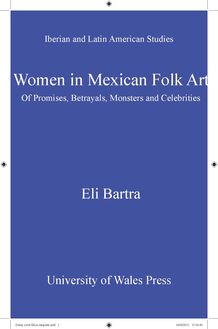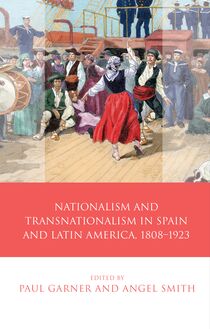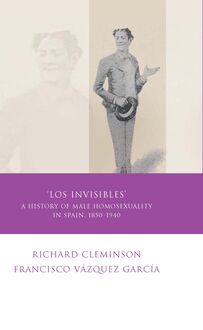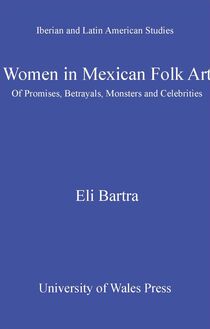The Spanish Golden Age Sonnet , livre ebook
144
pages
English
Ebooks
2016
Vous pourrez modifier la taille du texte de cet ouvrage
Obtenez un accès à la bibliothèque pour le consulter en ligne En savoir plus
Découvre YouScribe en t'inscrivant gratuitement
Découvre YouScribe en t'inscrivant gratuitement
144
pages
English
Ebooks
2016
Vous pourrez modifier la taille du texte de cet ouvrage
Obtenez un accès à la bibliothèque pour le consulter en ligne En savoir plus
Publié par
Date de parution
20 juillet 2016
Nombre de lectures
0
EAN13
9781783168989
Langue
English
The sonnets written during the Spanish Golden Age of the sixteenth and seventeenth centuries are among the finest poems written in the Spanish language. This book presents over one hundred of the best and most representative sonnets of that period, together with translations into English sonnets and detailed critical commentaries. Garcilaso de la Vega, Góngora and Quevedo receive particular attention, but other poets such as Aldana, Lope de Vega and Sor Juana Inés de la Cruz are also well represented. A substantial introduction provides accounts of the sonnet genre, of the historical and literary background, and of the problems faced by the translator of sonnets. The aim of this volume is to provide semantically accurate translations that bring the original sonnets to life in modern English as true sonnets: not just aids to the comprehension of the originals but also lively and enjoyable poems in their own right.
Publié par
Date de parution
20 juillet 2016
Nombre de lectures
0
EAN13
9781783168989
Langue
English
IBERIAN AND LATIN AMERICAN STUDIES
The Spanish Golden Age Sonnet
Series Editors
Professor David George (Swansea University) Professor Paul Garner (University of Leeds)
Editorial Board
David Frier (University of Leeds) Lisa Shaw (University of Liverpool) Gareth Walters (Swansea University) Rob Stone (University of Birmingham) David Gies (University of Virginia) Catherine Davies (University of London) Richard Cleminson (University of Leeds) Duncan Wheeler (University of Leeds) Jo Labanyi (New York University) Roger Bartra (Universidad Nacional Autónoma de México)
Other titles in the series
Catalan Cartoons: A Cultural and Political History
Rhiannon McGlade
Revolutionaries, Rebels and Robbers: The Golden Age of Banditry in Mexico, Latin America and the Chicano American southwest, 1850–1950
Pascale Baker
Teresa Margolles and the Aesthetics of Death
Julia Banwell
Galicia, A Sentimental Nation
Helena Miguelez-Carballeira
The Brazilian Road Movie
Sara Brandellero
The Spanish Civil War
Anindya Raychaudhuri
The Mexican Transition: Politics, Culture and Democracy in the Twenty-first Century
Roger Bartra
Adolfo Bioy Casares: Borges, Fiction and Art
Karl Posso
IBERIAN AND LATIN AMERICAN STUDIES
The Spanish Golden Age Sonnet
JOHN RUTHERFORD
© John Rutherford, 2016
All rights reserved. No part of this book may be reproduced in any material form (including photocopying or storing it in any medium by electronic means and whether or not transiently or incidentally to some other use of this publication) without the written permission of the copyright owner except in accordance with the provisions of the Copyright, Designs and Patents Act 1988. Applications for the copyright owner’s written permission to reproduce any part of this publication should be addressed to The University of Wales Press, 10 Columbus Walk, Brigantine Place, Cardiff CF10 4UP.
www.uwp.co.uk
British Library CIP
A catalogue record for this book is available from the British Library.
ISBN 978-1-78316-896-5
e-ISBN 978-1-78316-898-9
The right of John Rutherford to be identified as author of this work has been asserted in accordance with sections 77, 78 and 79 of the Copyright, Designs and Patents Act 1988.
Cover image: Coloured engraving of soldier and poet Garcilaso de la Vega (1501-36).
© ArchivoPrisma/Alamy Stock Photo
For Ricky, Abel and Olivia
Contents
Series Editors’ Foreword
Preface
Introduction
Íñigo López de Mendoza, the Marquis of Santillana (1398–1458)
Juan Boscán Almugáver ( c .1490–1542)
Garcilaso de la Vega (1503–1536)
Fernando de Herrera (1534–1597)
Francisco de Aldana (1537–1578)
Miguel de Cervantes Saavedra (1547–1616)
Luis de Góngora y Argote (1561–1627)
Lope de Vega Carpio (1562–1635)
An anonymous author (late sixteenth century)
Francisco Gómez de Quevedo y Villegas (1580–1645)
Pedro Calderón de la Barca (1600–1681)
Sor Juana Inés de la Cruz (1651–1695)
Select Bibliography
Index of first lines of Spanish sonnets
Series Editors’ Foreword
Over recent decades the traditional ‘languages and literatures’ model in Spanish departments in universities in the United Kingdom has been superseded by a contextual, interdisciplinary and ‘area studies’ approach to the study of the culture, history, society and politics of the Hispanic and Lusophone worlds – categories that extend far beyond the confines of the Iberian Peninsula, not only in Latin America but also to Spanish-speaking and Lusophone Africa.
In response to these dynamic trends in research priorities and curriculum development, this series is designed to present both disciplinary and interdisciplinary research within the general field of Iberian and Latin American Studies, particularly studies that explore all aspects of Cultural Production (inter alia literature, film, music, dance, sport) in Spanish, Portuguese, Basque, Catalan, Galician and indigenous languages of Latin America. The series also aims to publish research in the History and Politics of the Hispanic and Lusophone worlds, at the level of both the region and the nation-state, as well as on Cultural Studies that explore the shifting terrains of gender, sexual, racial and postcolonial identities in those same regions.
Preface
Spain’s Golden Age of the sixteenth and seventeenth centuries is so named because it was a period when the country flourished not only politically, becoming the dominant power in Europe, but also in the arts. The example of the great Italian writers inspired its literary culture with new life, and one of the Italian forms enthusiastically cultivated by Spanish poets was the sonnet, thousands of which were written in Spain during the sixteenth and seventeenth centuries. This book tells the fascinating story of the Spanish Golden Age sonnet by offering a representative selection of over a hundred of the best examples, together with verse translations and commentaries. Many of these sonnets, particularly the canonical ones, have already been translated into English, some of them several times. Most such translations are of two types. One prioritises content, and aims to be as semantically accurate as possible; these translations are in prose or in free or blank verse that approximates to a greater or lesser extent to sonnet form. The other type prioritises form, translating the content with great freedom in order to make it fit into the sonnet’s scheme of rhyme and rhythm, and the result is more properly called a version or a paraphrase than a translation. My aim has been to prioritise neither and to reproduce both, writing accurate translations that bring the originals to life in modern English as true sonnets, poems in their own right.
Any selection is bound to be in large measure arbitrary. I have included all the famous sonnets by the most important poets of the period, as well as some of their less well-known pieces that are also worthy of attention. With great regret, I have had to omit many good sonneteers and excellent sonnets. I have put the selected poets in chronological order of their dates of birth, and within each section I have followed the ordering of their sonnets that is used in the first editions. For each sonnet I have provided a verse translation and a commentary that, for reasons of space, attempts to be helpfully suggestive rather than exhaustive. For each poet there is a brief summary of life and works.
It is normal practice to modernise old texts for presentation to today’s readers, because their very different original punctuation and spelling would cause unnecessary and unhelpful problems of comprehension. Editors modernise in different ways; so, for the sake of consistency, I have gone back to the early editions and done my own editing. I have, however, left unchanged the Marquis of Santillana’s sonnet ( page 18 ) and the sonnet by Cervantes that he attributes to Solisdán ( page 110 ), the former to demonstrate the extent of any modern editor’s necessary interventions and the latter because its comicality is based on its archaisms. In the typographical presentation of sonnets there are also different traditions, different combinations of indentation and spaces, usually the work of editors rather than of poets; and here, too, consistency is desirable in a volume like this. Presenting a sonnet as one compact unit uninterrupted by indentation or spacing between lines gives the best visual sense of its tightness and strength, and this is what I have done. For the same reason I do not use capital letters at the beginnings of lines unless the normal rules of orthography require them.
For all the advice and encouragement I have received from my family and my friends I am deeply grateful. It has been a great pleasure to work with the University of Wales Press, and I am indebted to (in order of intervention) Sarah Lewis, Duncan Wheeler, Henry Maas and Dafydd Jones for their kindness and efficiency.
Introduction
The sonnet
The sonnet, a celebration of the intricate patterns that rhyme and rhythm can create, developed in Italy in the first half of the thirteenth century, when elegant Gothic tracery was supplanting Romanesque stolidity. It emerged as a love poem written in hendecasyllables, with an unusual asymmetric form, an octave followed by a sestet, and with a change in thought and rhyme dividing the two. The new departure at the beginning of the ninth line, the sonnet’s pivotal point, is called the volta, the turn. Like that of another lovely little artefact, the violin, the sonnet’s structure has hardly changed in the centuries since its invention. The octave’s rhyme-scheme was at first ABABABAB, but in the second half of the thirteenth century an ABBAABBA rhyme-scheme was adopted, and it became the standard one, used by all the major Italian sonneteers such as Dante Alighieri (c.1265–1321), Francesco Petrarca, ‘Petrarch’ (1304–74) and Giovanni Boccaccio (1313–75). The sestet often consists of two tercets rhyming CDECDE, although other threefold rhyme-schemes are allowed so long as no contiguous lines rhyme with each other. CDCDCD sometimes occurs, too. These rhyming patterns were inherited by the Spanish sonneteers.
Italian hendecasyllables originally had both duple and triple rhythms (the latter with stresses on the fourth, seventh and tenth syllables), but Petrarch brought more regularity to them, imposing a predominantly duple rhythm with most stresses falling on even-numbered syllables. (In this account, to avoid tiresome repetition, I use the word ‘stress’ to indicate a strong stress: to divide Spanish syllables into ‘stressed’ and ‘unstressed’ ones is a simplification that is helpful but misleading, because in reality they have various degrees of stress.) The Petrarchan hendecasyllable, with a rhythm like that of the English iambic pentameter, was the line used in Spanish Golden Age sonnets. The similarities between the stress-patterns of these two romance languages smoothed the transit
